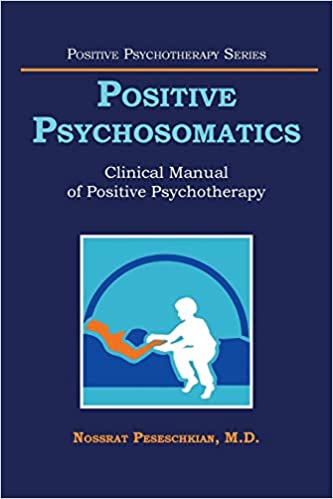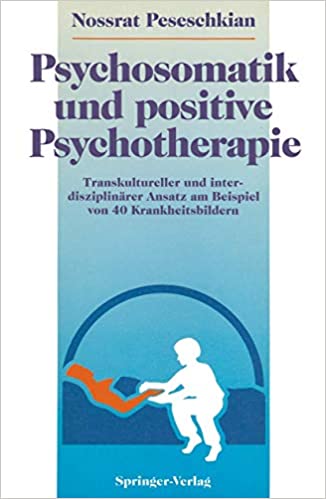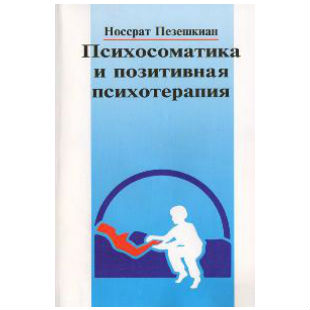Peseschkian, Nossrat (2016): Psychosomatics and Positive Psychotherapy (Positive Psychotherapy in Psychosomatic Medicine). Author House UK. ISBN 978-1524631611. English language
Peseschkian, Nossrat (1991): Psychosomatik und positive Psychotherapie: Transkultureller und interdisziplinärer Ansatz am Beispiel von 40 Krankheitsbildern (German Edition). Springer. ISBN 978-3540539568. German language
Пезешкиан Н. Психосоматика и позитивная психотерапия. Издательство: Институт позитивной психотерапии. Russian language
Professor Nossrat Peseschkian, M.D. (1933-2010), a German Board-certified specialist in psychiatry, neurology, psychosomatic medicine and psychotherapy, was born in Iran and lived in Germany since 1954. After graduating from Frankfurt University, he received his postgraduate psychotherapeutic training in Germany, Switzerland and in the United States.
Besides his daily work in his psychosomatic and psychotherapeutic private clinic in Wiesbaden, Germany (1969-2000), he was an associate professor for psychotherapy at the Academy of Continuing Medical Education of the State Medical Association in Hesse since 1974.
He is the founder of Positive Psychotherapy, a humanistic psychodynamic method based on a transcultural and interdisciplinary approach. Positive Psychotherapy has been introduced by Professor Peseschkian in seminars and lectures at universities and medical centers in more than 70 countries world-wide.
Professor Peseschkian was the founding director of the Wiesbaden Academy of Psychotherapy, a licensed postgraduate institute for medical doctors and psychologists, the founding president of the World Association for Positive Psychotherapy (WAPP) and the German Association for Positive Psychotherapy (DGPP).
This book, Positive Psychosomatics, is – out of 31 other monographs – Peseschkian’s main clinical book on the application of Positive Psychotherapy in the understanding and treatment of different disorders and illnesses. The author´s model to focus on the resources and positive aspects of conflicts – together with a transcultural perspective in the form of proverbs, myths and fables – and the use of special techniques and practical tools, have made not only the book, but this approach very successful in the treatment of patients with somatic, somatoform and neurotic disorders. Forty different disorders are explained in detail and also their therapeutic approach. A questionnaire at the end of each chapter gives the therapist and his patients a clear guideline in their hands.
Revised edition:
International Academy for Positive and Transcultural
Psychotherapy – Peseschkian Foundation, Wiesbaden, Germany
 Login
Login

